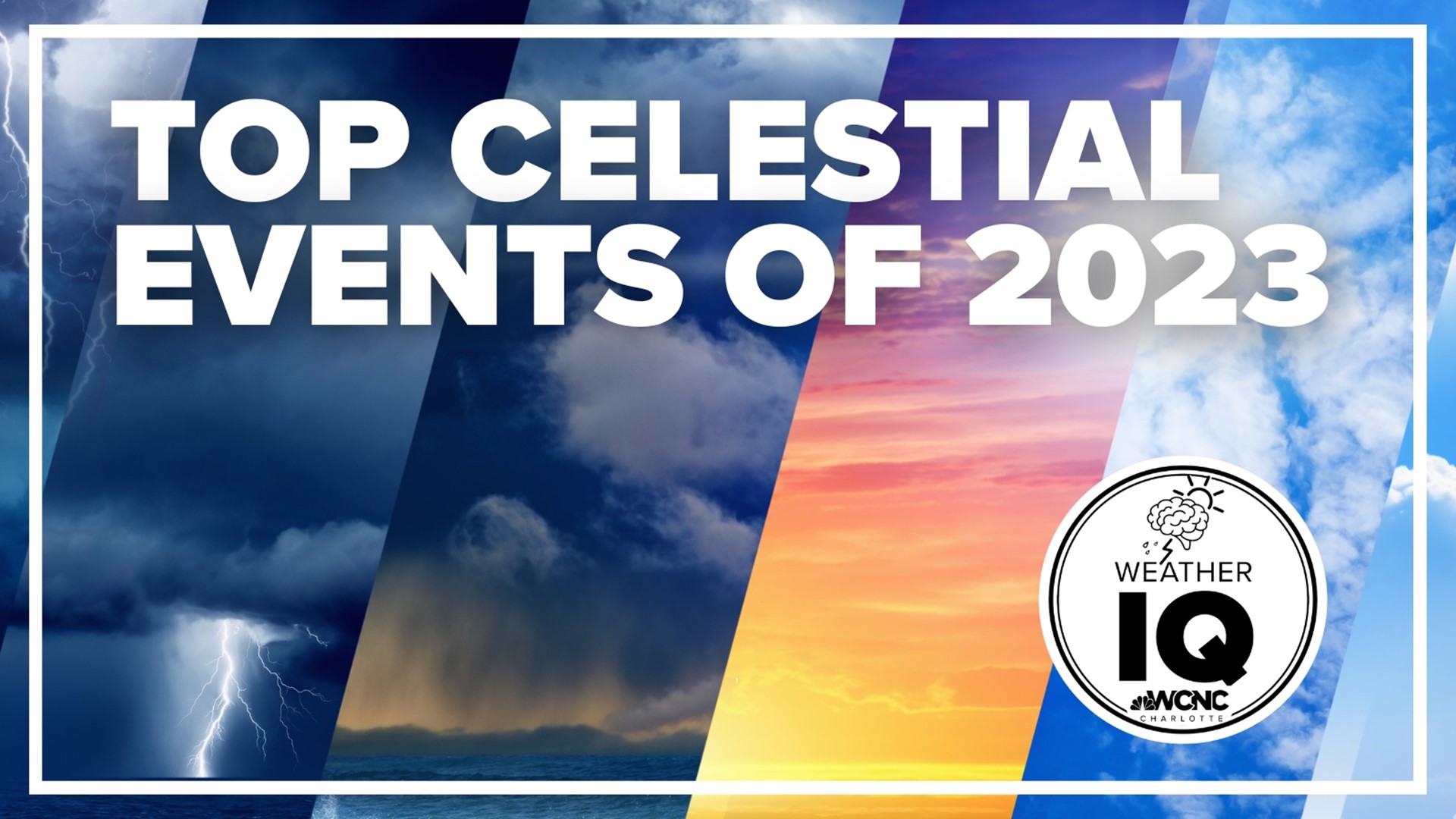Want to watch a total solar eclipse without leaving the United States? Your chance is coming relatively soon — but after that, not for another 20 years.
On April 8, 2024, a total solar eclipse will sweep across Mexico, the U.S. and Canada. According to NASA, the contiguous U.S. won't see another total solar eclipse until August 2044.
Total solar eclipses happen when the moon completely blocks the face of the sun, darkening the sky. While solar eclipses themselves aren't uncommon, they're only visible from a portion of the Earth each time — making total eclipses that are visible from near home rare.
The last total solar eclipse to be seen from the U.S. was in 2017, crossing from Oregon to South Carolina.
Where can I see the 2024 eclipse?
Only observers on the path of totality will see the sun's face completely blotted out by the moon.
That path enters the U.S. in Texas early in the afternoon before sweeping through Oklahoma, Arkansas, Missouri, Illinois, Kentucky, Indiana, Ohio, Pennsylvania, New York, Vermont, New Hampshire, and Maine. Observers in states outside of the path will still be able to see a partial eclipse.
Those who want to travel to see totality may need to plan ahead or risk skyrocketing hotel prices. A month before the 2017 eclipse, CNBC reported that hotel execs were seeing “strong double-digit demand” along the path. For a room at one such location, rates had jumped from $199 to $425 in just a week.
What should I expect?
Totality only lasts a few minutes, but the phases of a total solar eclipse last hours.
It starts with "first contact," when the moon first appears to touch the sun. This is the beginning of the partial eclipse phase, when the moon passes between us and the sun but doesn't completely cover its face. A crescent of the sun will be visible.

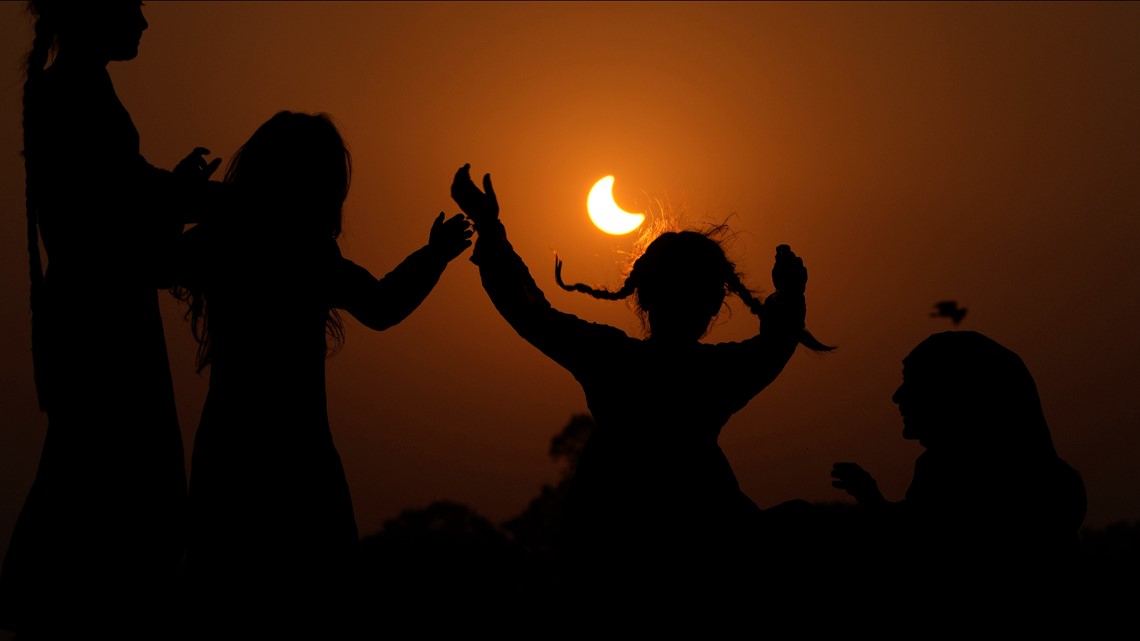
Once the moon covers most of the sun's face, observers may see tiny beads of light. Called Baily's Beads, they're caused by rays of light running through the moon's craggy surface. NASA says they're short-lived and may not be visible to all observers. When the moon has almost completely blotted out the sun's face, only one bright spot will be left. This is called the "diamond ring" effect.

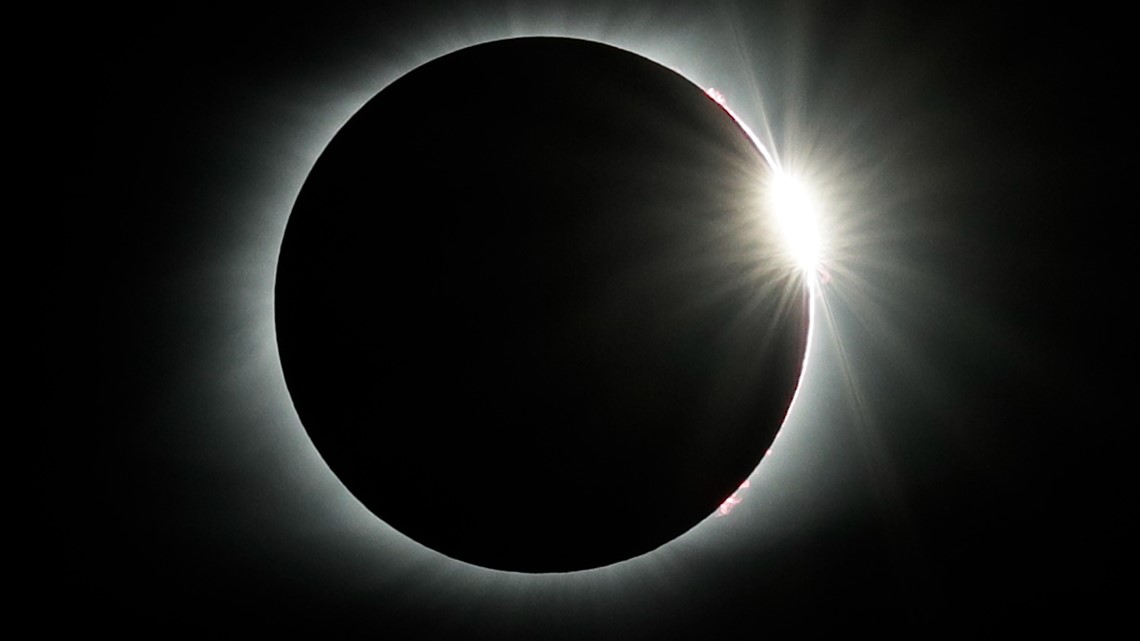
Finally, totality begins. This is the only time you can safely look at the eclipse directly — you'll need eclipse glasses to look before and after.
"During totality, take a few seconds to observe the world around you," NASA's website says. "You may be able to see a 360 degree sunset. You may also be able to see some particularly bright stars or planets in the darkened sky. The air temperature will drop and often an eerie silence will settle around you."

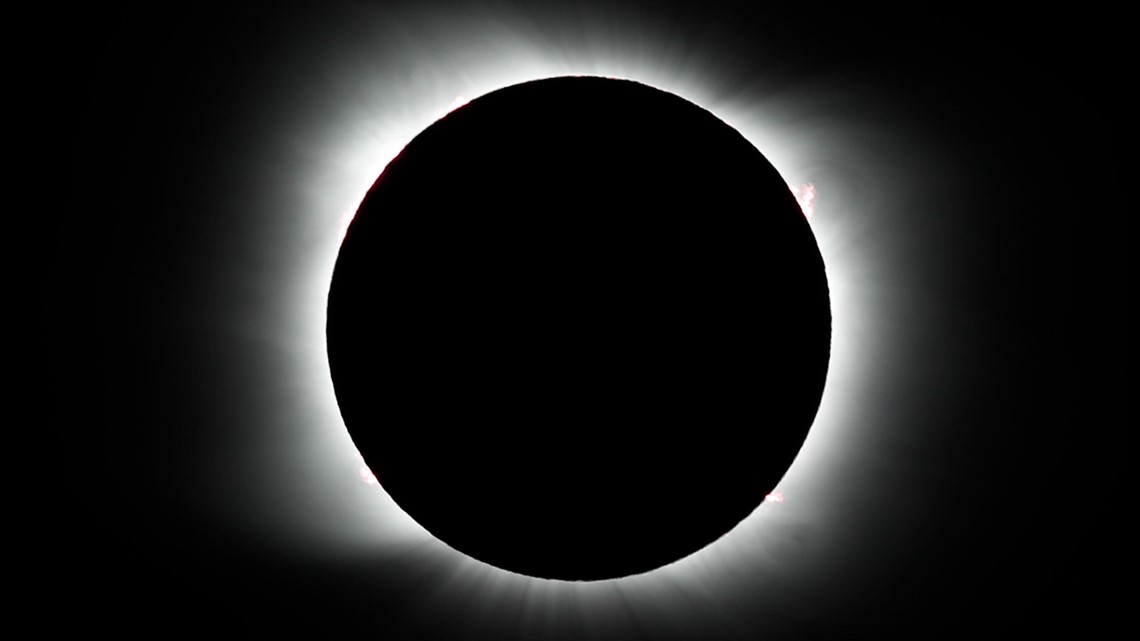
The dark sky even tricks nocturnal animals into thinking it's nighttime. You may hear crickets chirping or frogs croaking.
The moment ends as quickly as it begins, with brightening and then another "diamond" on the opposite side of the moon. Observers will see the partial eclipse for another hour or so, with coverage gradually decreasing until the sun's light shines freely.
The 'ring of fire'
When it rains, it pours. On Oct. 14, 2023, less than a year before the total solar eclipse, the U.S. will see an annular solar eclipse.
This is what happens when the moon passes between Earth and the sun at its farthest point in orbit. Because the moon is further away, it appears smaller and doesn't cover the sun's face. NASA says this creates a dramatic "ring of fire" effect.

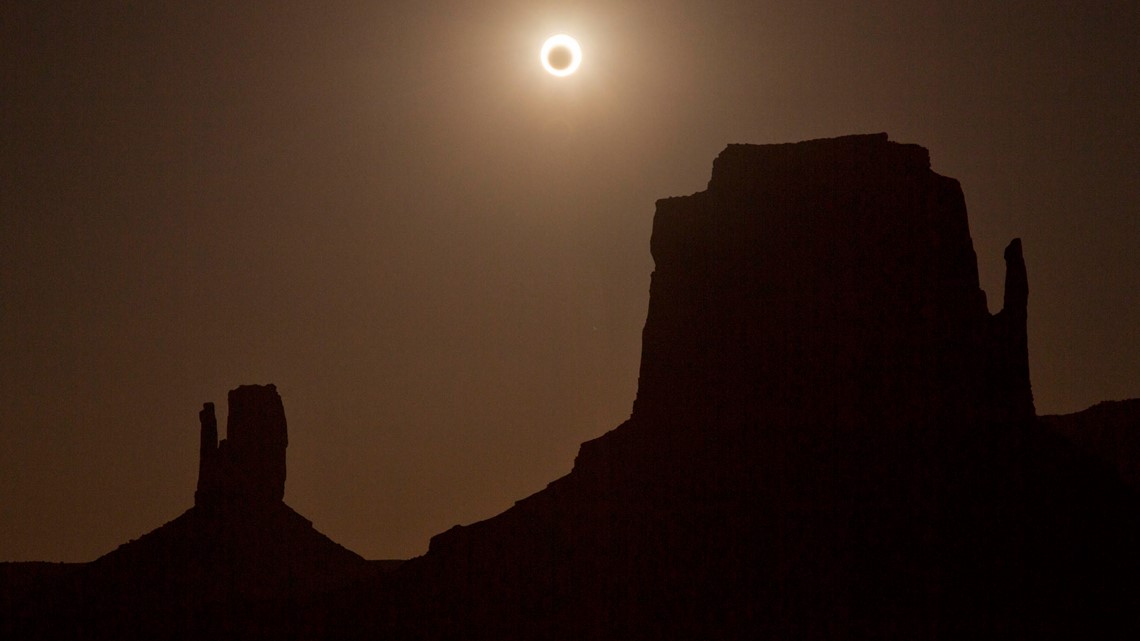
The full annular eclipse will be visible in Oregon, Nevada, Utah, New Mexico, and Texas, as well as some parts of California, Idaho, Colorado, and Arizona. All 48 contiguous states will see a partial eclipse, though the effect will be limited for observers in the Northeast.

